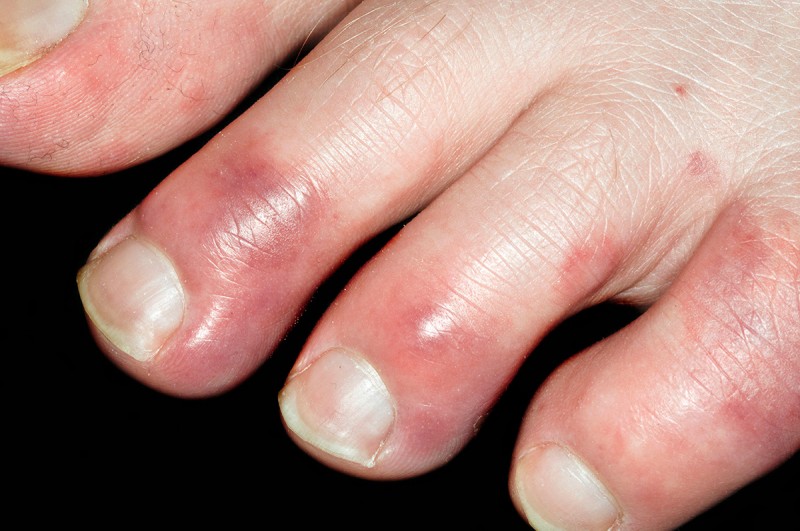
Winter brings with it a slew of challenges, and for some, it's not just about battling the cold. Many individuals find themselves grappling with an incessant itch on their skin during the chilly months. If you've ever wondered why your skin seems to rebel against the winter chill, it's time to explore the world of chilblains and understand the serious reasons behind this discomfort.
Chilblains, also known as pernio or cold sores, are painful, itchy swellings on the skin that occur in response to cold temperatures. These irritating lesions typically affect the extremities, such as fingers and toes. So, why does your skin act up in the winter, and what are the underlying causes of chilblains?
The primary culprit behind chilblains is exposure to cold and humidity. When the skin is suddenly exposed to these harsh conditions, blood vessels near the surface constrict, leading to poor circulation. This lack of proper blood flow can result in the development of chilblains.
Chilblains aren't solely a consequence of exposure to cold air. Various factors contribute to their occurrence, shedding light on the complexity of this winter woe.
Moisture exacerbates the impact of cold on the skin. Damp conditions, whether from rain, snow, or inadequate drying, create an ideal environment for chilblains to thrive.
Wearing tight shoes that constrict blood flow can contribute to the formation of chilblains. It's essential to strike a balance between staying warm and ensuring proper circulation to prevent this uncomfortable condition.
How do you distinguish chilblains from a regular case of the winter blues? Understanding the symptoms is crucial for timely intervention.
Chilblains are characterized by intense itching and discomfort. If you find yourself incessantly scratching your skin during winter, it's time to investigate further.
As chilblains progress, affected areas may change color, ranging from red to purple. Keeping an eye on these color shifts can provide insights into the severity of the condition.
Not everyone faces an equal risk of developing chilblains. Certain factors predispose individuals to this winter-induced ailment.
While chilblains can affect individuals of all ages, children and elderly individuals are particularly vulnerable. Additionally, women tend to experience chilblains more frequently than men.
Individuals with poor circulation are at a higher risk of developing chilblains. Conditions such as Raynaud's disease, which affect blood vessel function, can contribute to the susceptibility to this winter ailment.
Preventing chilblains involves adopting proactive measures to protect your skin from the harsh winter elements.
Layering clothing is a simple yet effective strategy to retain body heat and prevent chilblains. Wearing thermal socks and gloves can provide an additional layer of protection for your extremities.
Managing moisture is key to thwarting chilblains. Ensure your clothing is dry, and invest in waterproof gear to shield yourself from rain and snow.
If chilblains do make an unwelcome appearance, there are various treatment options to alleviate symptoms and expedite the healing process.
Applying topical creams or ointments can help alleviate itching and reduce inflammation associated with chilblains. Calamine lotion and corticosteroid creams are popular choices.
Slowly warming up chilled skin is crucial to prevent further damage. Avoid sudden exposure to heat, as it can exacerbate the condition.
While chilblains often resolve on their own, certain circumstances warrant medical attention.
If symptoms persist or worsen despite home remedies, it's essential to consult a healthcare professional. They can rule out underlying conditions and recommend appropriate interventions.
Chilblains may be an unwelcome winter companion, but understanding the causes, symptoms, and preventive measures can empower you to navigate the season with ease. By adopting protective strategies and staying mindful of your skin's needs, you can bid farewell to the winter itch and embrace the colder months with confidence.
Exciting Car Launches Await India in 2024: EVs and Upgraded Models Take Center Stage
New Tesla Plant in Gujarat Set to be Announced at Vibrant Gujarat Summit with Elon Musk Present